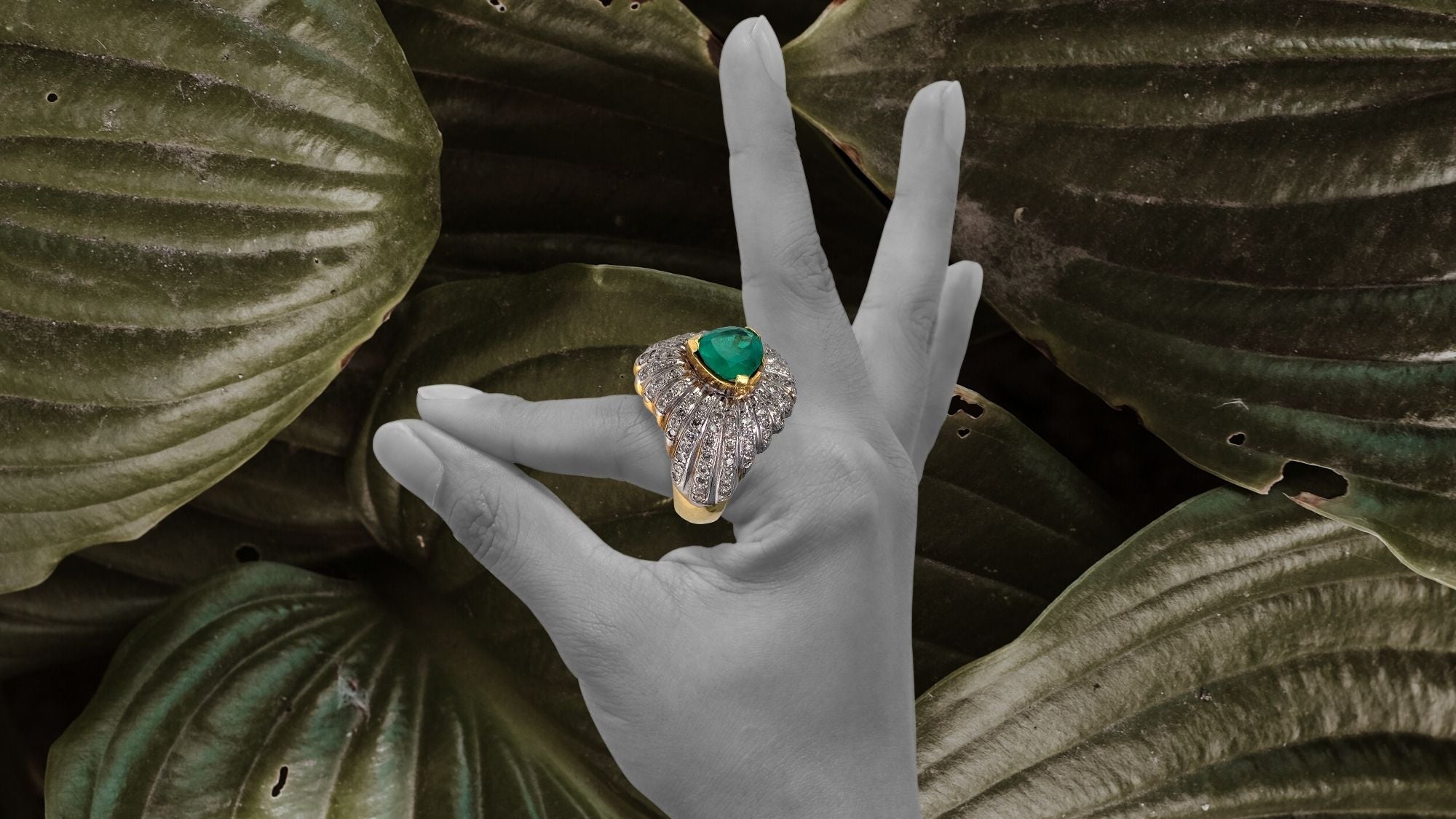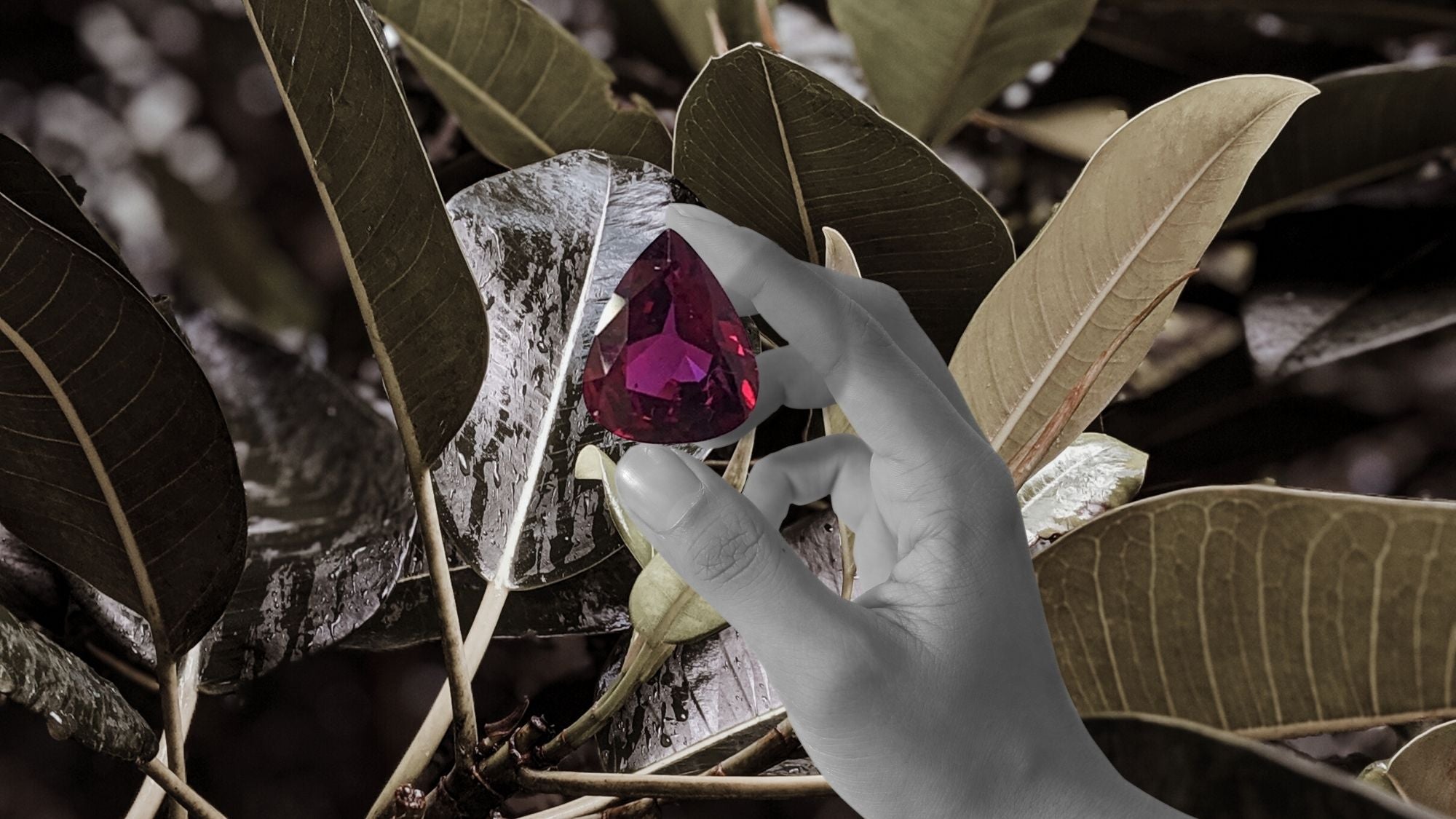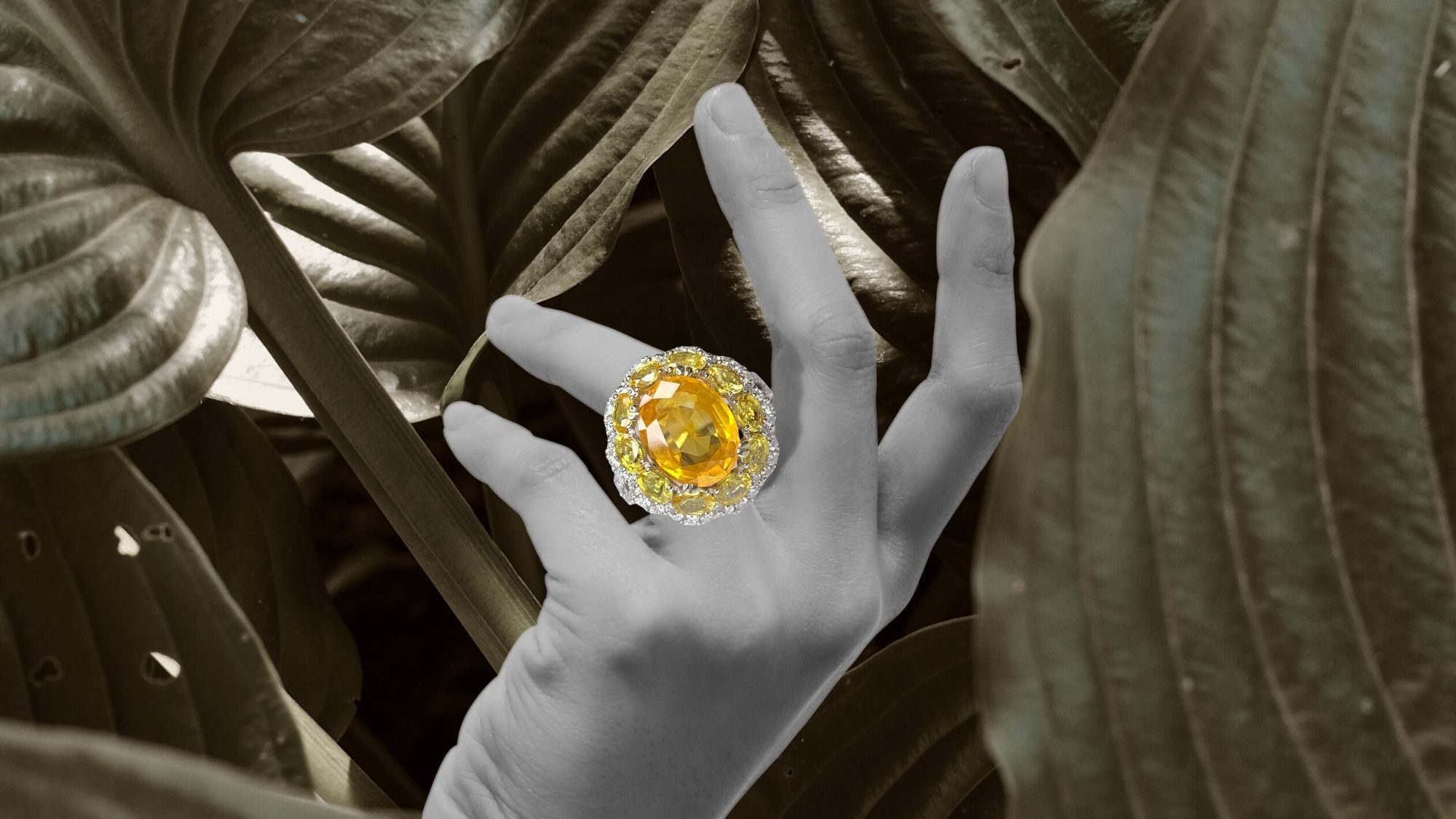Cluster rings are enchanting pieces of jewelry that captivate with their unique design and dazzling gemstone arrangements. These intricately crafted rings boast a cluster of stones, creating a stunning visual spectacle. In this article, we will delve into the fascinating world of cluster rings, exploring their history, symbolism, popular variations, and more.
The History of Cluster Rings

The concept of clustering gemstones together to create a stunning visual effect can be traced back to ancient civilizations such as Egypt, Rome, and Greece. In these early cultures, cluster rings were often adorned with precious gemstones, symbolizing wealth, power, and prestige. The technique of grouping gemstones in a cluster allowed craftsmen to maximize the brilliance and color of each stone.
During the Renaissance period in Europe, cluster rings gained popularity among the nobility and the aristocracy. Intricate designs featuring clusters of diamonds, rubies, sapphires, and emeralds were crafted, emphasizing opulence and grandeur. These rings were often worn as symbols of social status and were intricately detailed with elaborate metalwork.
In the Baroque era, cluster rings experienced a significant transformation. The focus shifted from using expensive gemstones to incorporating an array of smaller, less valuable stones. This approach allowed jewelers to create intricate floral motifs and geometric patterns with clusters of gemstones. The asymmetrical designs of Baroque cluster rings were known for their whimsical and romantic aesthetics.
Cluster rings flourished during the Victorian era, particularly in the 19th century. Queen Victoria's influence on jewelry trends played a crucial role in popularizing cluster rings. These rings often featured intricate floral arrangements symbolizing sentiments and hidden meanings. The Victorians embraced the "language of gemstones," where each stone represented a specific emotion or message. Cluster rings became a canvas for expressing love, friendship, or remembrance through carefully chosen gemstones.
In the early 20th century, cluster rings underwent a dramatic transformation during the Art Deco movement. The Art Deco era embraced geometric shapes, bold colors, and a departure from traditional designs. Cluster rings of this period featured geometric clusters of gemstones, often combined with contrasting materials such as onyx, jade, or coral. The symmetrical and architectural designs of Art Deco cluster rings reflected the modern and avant-garde sensibilities of the time.
In modern times, cluster rings continue to enchant jewelry enthusiasts. Contemporary designers have infused fresh perspectives into cluster ring designs, combining various gemstones, metals, and innovative settings. Asymmetrical clusters, organic motifs, and unconventional color combinations have breathed new life into this classic jewelry style. Cluster rings have also found popularity as alternative engagement rings, offering a unique and distinctive choice for couples seeking non-traditional designs.
Symbolism and Significance of Cluster Rings

Cluster rings hold deep symbolism and significance, making them more than just beautiful pieces of jewelry. The cluster design symbolizes the coming together of multiple gemstones in harmony. Each gem within the cluster represents an individual or an aspect of one's life, and when combined, they create a cohesive and striking visual representation of unity. Cluster rings are often chosen to celebrate relationships, such as engagements, weddings, or anniversaries, where the cluster represents the bond between two individuals or the merging of families.
By clustering multiple gemstones together, cluster rings amplify the symbolism and meaning of each individual stone. Each gemstone within the cluster can carry its own significance and symbolism, such as love, passion, wisdom, protection, or healing. When combined, they create a powerful statement, reflecting the depth and complexity of emotions or experiences associated with the ring.
Cluster rings offer a unique opportunity to express one's personal story or journey. Each gemstone within the cluster can represent a specific milestone, memory, or significant event in one's life. This allows the wearer to carry a tangible representation of their life experiences, reminding them of cherished moments or personal triumphs. Cluster rings become a testament to the wearer's individuality and serve as a personal talisman.
Cluster rings offer a canvas for self-expression and individuality. The arrangement of gemstones allows for endless design possibilities, enabling wearers to choose combinations that resonate with their unique personality, style, or birthstones. Each cluster ring becomes a reflection of the wearer's identity and serves as a statement piece that sets them apart.
Craftsmanship and Construction of Cluster Rings

The craftsmanship of a cluster ring begins with the careful selection of gemstones. Jewelers choose gems based on quality, color, clarity, and cut to ensure a harmonious blend within the cluster. The size and shape of each stone are also considered to create a balanced and visually appealing arrangement. The gemstones may be diamonds, colored gemstones, or a combination of both, depending on the desired design and aesthetic.
Setting the gemstones in a cluster ring requires precision and expertise. Various setting techniques may be employed, depending on the design and desired aesthetic. Common setting techniques include prong setting, bezel setting, or a combination of these. Prong settings hold each gemstone in place with delicate metal claws, allowing maximum visibility and light penetration. Bezel settings, on the other hand, encircle the gems with a metal rim, providing a secure and sleek look. The choice of setting technique influences the overall appearance and durability of the cluster ring.
The metalwork in cluster rings plays a crucial role in providing structural integrity and enhancing the overall design. Jewelers meticulously shape and mold the metal, considering the weight, balance, and durability of the ring. The choice of metal, such as gold, platinum, or silver, affects the ring's durability and aesthetic appeal. Intricate detailing, such as filigree work or engraving, may be incorporated to add an extra layer of craftsmanship and personalization.
The finishing touches of a cluster ring involve polishing and refining the metalwork to achieve a flawless and lustrous appearance. Jewelers carefully remove any imperfections, ensuring smooth surfaces and clean edges. The final polish enhances the brilliance of the gemstones and adds a luxurious sheen to the overall design.
Cluster rings embody a captivating fusion of artistry, symbolism, and craftsmanship. Whether you're captivated by their rich historical significance, ability to amplify meaning through multiple gemstones, or their representation of personal stories and connections, cluster rings hold a special place in the world of jewelry. As you embark on your search for a cluster ring that reflects your unique style and resonates with your heart, we encourage you to explore the exquisite collection offered by Sheena Stone. Embrace the allure of cluster rings from Sheena Stone and discover a piece of jewelry that will not only adorn your hand but also become a cherished symbol of your most precious moments.



